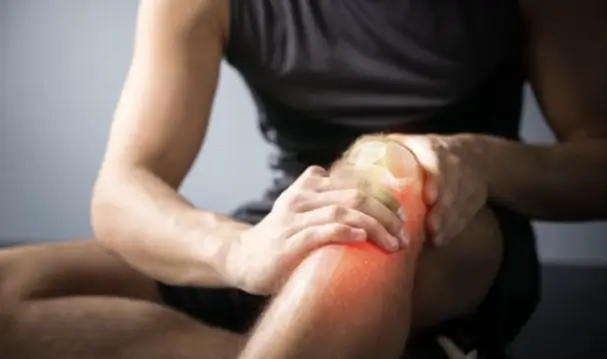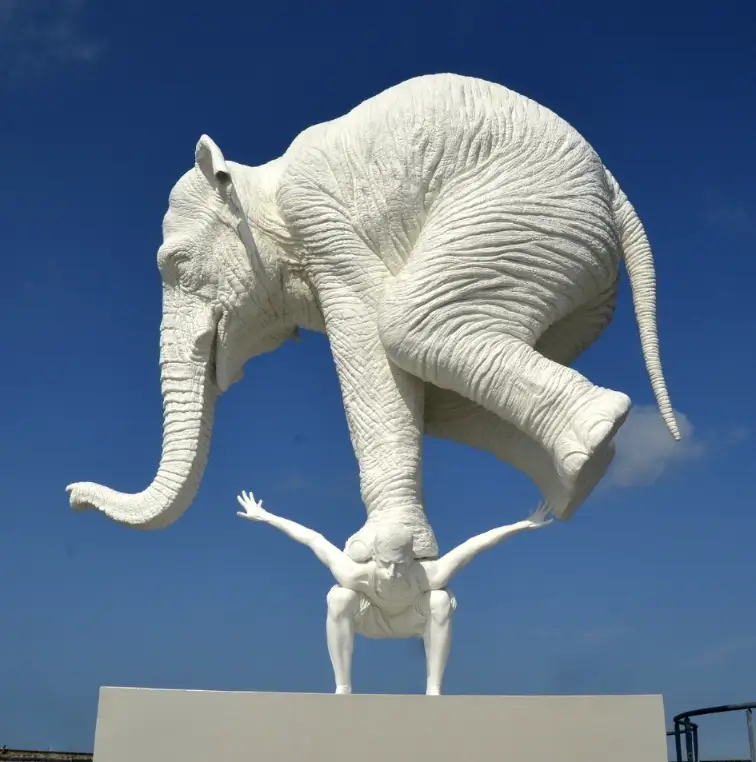7 Reasons Ice Baths Thrive in Australia
7 Reasons Ice Baths Thrive in Australia
Introduction: The Chilling Appeal of Ice Baths
Ice baths are synonymous with cold water immersion therapy or cold water therapy, which involves immersing oneself in ice water, usually at temperatures between 10 and 15 degrees Celsius (50 and 59 degrees Fahrenheit). This ancient treatment dates back to the hot and cold water bathing rituals of ancient Roman and Greek civilizations, but has found new life in the modern world. Its resurgence has been driven largely by athletes, health enthusiasts and health-conscious individuals seeking the myriad benefits of this cold water therapy.
Overview of the Popularity of Ice Baths in Australia
In Australia, the embrace of ice baths has grown remarkably, a trend shaped by their distinct climate, vibrant sporting culture, health-focused populace, and the influence of Aboriginal traditions. The Australian climate, characterized by its hot summers with temperatures often exceeding 40°C, naturally steers people towards finding effective cooling methods. Ice baths have emerged as a popular solution, offering both a respite from the heat and a range of health benefits.
The sporting culture here plays a significant role too. Australians are avid fans and participants in sports like cricket, rugby, AFL, tennis, swimming, and surfing. Athletes from these sports regularly turn to ice baths as a crucial component of their recovery process, aiding in injury prevention and helping to recuperate after intense physical activities. This practice, known for reducing muscle inflammation and soreness, has become integral to athletic training across the nation.
Beyond the athletic world, the general population, known for its health consciousness, has also adopted ice baths. Recognized for their benefits in improving circulation, reducing stress, and boosting overall wellness, ice baths have become a part of many Australians’ wellness routines.
Additionally, the integration of ice baths with Aboriginal traditions adds a cultural dimension to their popularity. This practice, reflecting a blend of modern health trends and ancient wisdom, highlights the deep respect for the traditions of Australia’s indigenous people.
Therefore, the rising trend of ice bathing in Australia is a confluence of the need to stay cool in our warm climate, its effectiveness in exercise recovery, the wide-ranging health benefits, and its cultural significance, integrating modern lifestyle with ancient practices.
1.Natural Environment

Australia’s warm climate and hot summers
Ice bathing has evolved from a fad to an integral part of the Australian way of life in sunny Australia, where temperatures can range from mild to intense. Imagine the following: a classic Australian day, with the sun beaming down from a clear blue sky and a heatwave that is felt strongly in both the large, dry outback and the bustling cities. The appeal of an ice bath becomes clear in this setting.
What a refreshing and reviving experience taking an ice bath can be after braving Australia’s unrelenting heat. There’s more to this experience than just a physical decompression. It’s like a ritual, a body and mind reset button. It is a concrete means of escaping the oppressive heat and our remedy for the exhaustion and sluggishness brought on by extended exposure to the heat.
The need for cooling and rejuvenation
In Australia, however, ice bathing is about more than just cooling off. It takes a broader, holistic approach to health and exercise recovery. The act of being immersed in ice water is transformative, shaking the body’s systems, awakening and revitalizing them. It engages all the senses and uplifts the spirit and mind, complementing the soothing of the body.
In Australia, ice bathing has become synonymous with a moment of tranquility in the busy lives of Australians. Ice bathing represents a space for solitude and introspection, an opportunity to pause and reconnect with ourselves and our environment. This practice is a testament to our culture’s emphasis on balance and wellness, not only as a way to beat the heat, but also as an expression of rejuvenation and love of life.
Therefore, on this sun-drenched continent, ice bathing is not just a response to climatic conditions; it is also an expression of a way of life that values holistic health. It’s really about cooling off, but it’s also about embracing a moment of serenity, a practice that enriches the connection between Australians and the continent.
2. Sporting Culture

Australia’s Love for Sports and Physical Activities
Australia is renowned for its deep-rooted love of sport and physical activity. From cricket to rugby, from swimming to AFL, Australians are passionate about participating in competitive sport and maintaining an active lifestyle.
This cultural affinity for sport can be attributed to a number of factors, such as Australia’s outdoor-friendly climate, vast natural landscapes and a community-wide focus on health and fitness. As a result, Australians are constantly looking for ways to optimize athletic performance, which has led to innovative recovery methods such as ice baths and compression therapy.
Ice Baths as a Recovery Tool for Athletes
For elite athletes and professional sports teams in Australia, ice baths have become an indispensable part of their post-workout or post-match recovery routine. The intense physical exertion that accompanies high-performance training or competitive sports can often result in muscle damage, inflammation, and overall fatigue. Ice baths offer athletes a scientifically proven method to accelerate the recovery process by exposing their bodies to sub-zero temperatures.
One study published in Frontiers in Sports and Active Living found that in a group of 13 national-level volleyball athletes, cold water immersion aided in recovery—particularly when used long term, approximately two weeks or more. And who can forget the scene in Ted Lasso, when Roy Kent takes to his blue recycling can to soak in an ice bath and wallow in his game performance? (“Look at you in there, looking like a brunette Oscar the Grouch!”)
By incorporating ice baths into their recovery regimen, Australian athletes can effectively reduce muscle soreness, inflammation, and recovery time. This enables them to train more consistently at a high intensity while minimizing the risk of overuse injuries.
Moreover, the mental resilience fostered through ice bath therapy allows athletes to maintain a competitive edge by keeping stress levels in check and enhancing their overall well-being. As a result, the sporting culture in Australia has embraced ice baths as an essential tool for optimizing performance and ensuring longevity in an athlete’s career.
If you want to know what transformations 30 days in a row of ice baths can do for you, click here.
3. Ice baths reduce inflammation and muscle soreness

Ice baths have gained considerable traction in Australia due to their remarkable ability to alleviate inflammation and muscle soreness. When the body is exposed to cold water, blood vessels constrict, leading to a decrease in blood flow. This constriction limits the release of inflammatory markers, thus reducing inflammation.
Additionally, ice baths help mitigate the production of pro-inflammatory cytokines, substances that play a role in triggering pain and swelling. Furthermore, cold water therapy stimulates the body’s natural healing process by inducing vasoconstriction.
The restricted blood flow caused by exposure to icy temperatures causes metabolic waste products, such as lactic acid and carbon dioxide, to be efficiently flushed out from muscle tissues. This flushing effect aids in reducing muscle soreness significantly and expediting recovery time between workouts or physically demanding activities.
4. Cold Therapy and its Impact on Blood Flow

The impact of ice baths on blood flow is central to their effectiveness in promoting health and well-being. When immersed in icy water, blood vessels constrict as a response to the cold stimulus. This constriction redirects blood flow away from peripheral tissues towards vital organs for protection.
As a result, when individuals exit an ice bath, there occurs a process called reactive hyperemia – an immediate increase in blood circulation upon rewarming. Reactive hyperemia provides numerous benefits for athletes or individuals engaging in intense physical activities by enhancing nutrient delivery to muscles that were taxed during exercise.
The increased blood flow brings along oxygen and essential nutrients required for muscle repair and replenishment of depleted energy stores. Consequently, this expedited nutrient delivery facilitates faster recovery times while also promoting overall muscular adaptation and growth.
5. Stress Reduction through Cold Exposure

Cold exposure, such as that experienced during ice baths, has been shown to significantly reduce stress levels. The impact stems from the activation of the sympathetic nervous system, triggering a “fight or flight” response that releases hormones like adrenaline and noradrenaline. This natural stress response prepares the body to face potential threats by increasing heart rate, blood pressure, and oxygen intake.
While this initial stress response may seem counterintuitive to relaxation, it actually helps regulate the autonomic nervous system and promotes long-term stress reduction. Regular exposure to cold temperatures has been found to desensitize individuals to daily stressors and improve their resilience towards future challenges.
Through repeated exposures, the body adapts by regulating cortisol levels more effectively, enhancing one’s ability to cope with stress and promoting an overall sense of calmness and well-being. Ice baths provide undeniable benefits for mental health.
The release of endorphins contributes to mood enhancement while cold exposure has a profound impact on mental well-being by reducing stress levels through both physiological and psychological mechanisms. By immersing oneself in icy waters regularly, individuals can experience an uplift in mood, heightened focus, reduced stress levels, and increased resilience towards life’s challenges – all contributing factors to improved mental health.
6. Cultural Traditions
Ice baths are part of traditional Australian culture
This meditative state allowed them to transcend physical discomfort and access a heightened spiritual awareness. The powerful combination of cold immersion and mindfulness served as a catalyst for personal introspection, reflection, and healing.
In modern times, efforts are being made to preserve these sacred practices within Aboriginal communities while also fostering cultural appreciation among non-Indigenous Australians. By understanding and respecting the cultural significance of ice baths in Indigenous traditions, we can gain a deeper appreciation for their rich heritage while embracing this ancient practice’s physical and spiritual benefits.
7. Tourism Appeal
When it comes to the tourism appeal of ice baths in Australia, one cannot overlook the plethora of wellness retreats that offer immersive and rejuvenating ice bath experiences. These retreats, nestled in scenic locations across the country, provide a perfect blend of natural beauty and therapeutic cold therapy.
Visitors can indulge in refreshing dips into icy waters while surrounded by lush greenery, serene beaches, or breathtaking mountain backdrops. The ice bath experiences at these wellness retreats are designed to cater to both beginners and seasoned cold therapy enthusiasts.
Trained professionals guide participants through the process, ensuring safety and maximizing benefits. Retreat-goers have the opportunity to not only experience the invigorating effects of submerging themselves in freezing waters but also learn about proper breathing techniques and mindfulness practices that enhance the overall experience.
summarize
Ice baths in Australia have become a multifaceted phenomenon, thriving due to their health benefits, cultural significance, and appeal to tourists. These baths, popular among athletes for reducing inflammation and muscle soreness, also offer mental health benefits like mood enhancement and stress reduction. The practice holds cultural importance, rooted in Indigenous Australian cold water rituals symbolizing purification and connection with nature. The growing tourism industry around wellness retreats offering ice bath experiences further highlights their appeal. Ice baths symbolize Australia’s sporting passion, love for nature, and dedication to holistic well-being.
Vestibulum ante ipsum
You also want to know these…
Vestibulum ante ipsum
7 Reasons Ice Baths Thrive in Australia
Introduction: The Chilling Appeal of Ice Baths
Ice baths are synonymous with cold water immersion therapy or cold water therapy, which involves immersing oneself in ice water, usually at temperatures between 10 and 15 degrees Celsius (50 and 59 degrees Fahrenheit). This ancient treatment dates back to the hot and cold water bathing rituals of ancient Roman and Greek civilizations, but has found new life in the modern world. Its resurgence has been driven largely by athletes, health enthusiasts and health-conscious individuals seeking the myriad benefits of this cold water therapy.
Overview of the Popularity of Ice Baths in Australia
In Australia, the embrace of ice baths has grown remarkably, a trend shaped by their distinct climate, vibrant sporting culture, health-focused populace, and the influence of Aboriginal traditions. The Australian climate, characterized by its hot summers with temperatures often exceeding 40°C, naturally steers people towards finding effective cooling methods. Ice baths have emerged as a popular solution, offering both a respite from the heat and a range of health benefits.
The sporting culture here plays a significant role too. Australians are avid fans and participants in sports like cricket, rugby, AFL, tennis, swimming, and surfing. Athletes from these sports regularly turn to ice baths as a crucial component of their recovery process, aiding in injury prevention and helping to recuperate after intense physical activities. This practice, known for reducing muscle inflammation and soreness, has become integral to athletic training across the nation.
Beyond the athletic world, the general population, known for its health consciousness, has also adopted ice baths. Recognized for their benefits in improving circulation, reducing stress, and boosting overall wellness, ice baths have become a part of many Australians’ wellness routines.
Additionally, the integration of ice baths with Aboriginal traditions adds a cultural dimension to their popularity. This practice, reflecting a blend of modern health trends and ancient wisdom, highlights the deep respect for the traditions of Australia’s indigenous people.
Therefore, the rising trend of ice bathing in Australia is a confluence of the need to stay cool in our warm climate, its effectiveness in exercise recovery, the wide-ranging health benefits, and its cultural significance, integrating modern lifestyle with ancient practices.
1.Natural Environment

Australia’s warm climate and hot summers
Ice bathing has evolved from a fad to an integral part of the Australian way of life in sunny Australia, where temperatures can range from mild to intense. Imagine the following: a classic Australian day, with the sun beaming down from a clear blue sky and a heatwave that is felt strongly in both the large, dry outback and the bustling cities. The appeal of an ice bath becomes clear in this setting.
What a refreshing and reviving experience taking an ice bath can be after braving Australia’s unrelenting heat. There’s more to this experience than just a physical decompression. It’s like a ritual, a body and mind reset button. It is a concrete means of escaping the oppressive heat and our remedy for the exhaustion and sluggishness brought on by extended exposure to the heat.
The need for cooling and rejuvenation
In Australia, however, ice bathing is about more than just cooling off. It takes a broader, holistic approach to health and exercise recovery. The act of being immersed in ice water is transformative, shaking the body’s systems, awakening and revitalizing them. It engages all the senses and uplifts the spirit and mind, complementing the soothing of the body.
In Australia, ice bathing has become synonymous with a moment of tranquility in the busy lives of Australians. Ice bathing represents a space for solitude and introspection, an opportunity to pause and reconnect with ourselves and our environment. This practice is a testament to our culture’s emphasis on balance and wellness, not only as a way to beat the heat, but also as an expression of rejuvenation and love of life.
Therefore, on this sun-drenched continent, ice bathing is not just a response to climatic conditions; it is also an expression of a way of life that values holistic health. It’s really about cooling off, but it’s also about embracing a moment of serenity, a practice that enriches the connection between Australians and the continent.
2. Sporting Culture

Australia’s Love for Sports and Physical Activities
Australia is renowned for its deep-rooted love of sport and physical activity. From cricket to rugby, from swimming to AFL, Australians are passionate about participating in competitive sport and maintaining an active lifestyle.
This cultural affinity for sport can be attributed to a number of factors, such as Australia’s outdoor-friendly climate, vast natural landscapes and a community-wide focus on health and fitness. As a result, Australians are constantly looking for ways to optimize athletic performance, which has led to innovative recovery methods such as ice baths and compression therapy.
Ice Baths as a Recovery Tool for Athletes
For elite athletes and professional sports teams in Australia, ice baths have become an indispensable part of their post-workout or post-match recovery routine. The intense physical exertion that accompanies high-performance training or competitive sports can often result in muscle damage, inflammation, and overall fatigue. Ice baths offer athletes a scientifically proven method to accelerate the recovery process by exposing their bodies to sub-zero temperatures.
One study published in Frontiers in Sports and Active Living found that in a group of 13 national-level volleyball athletes, cold water immersion aided in recovery—particularly when used long term, approximately two weeks or more. And who can forget the scene in Ted Lasso, when Roy Kent takes to his blue recycling can to soak in an ice bath and wallow in his game performance? (“Look at you in there, looking like a brunette Oscar the Grouch!”)
By incorporating ice baths into their recovery regimen, Australian athletes can effectively reduce muscle soreness, inflammation, and recovery time. This enables them to train more consistently at a high intensity while minimizing the risk of overuse injuries.
Moreover, the mental resilience fostered through ice bath therapy allows athletes to maintain a competitive edge by keeping stress levels in check and enhancing their overall well-being. As a result, the sporting culture in Australia has embraced ice baths as an essential tool for optimizing performance and ensuring longevity in an athlete’s career.
If you want to know what transformations 30 days in a row of ice baths can do for you, click here.
3. Ice baths reduce inflammation and muscle soreness

Ice baths have gained considerable traction in Australia due to their remarkable ability to alleviate inflammation and muscle soreness. When the body is exposed to cold water, blood vessels constrict, leading to a decrease in blood flow. This constriction limits the release of inflammatory markers, thus reducing inflammation.
Additionally, ice baths help mitigate the production of pro-inflammatory cytokines, substances that play a role in triggering pain and swelling. Furthermore, cold water therapy stimulates the body’s natural healing process by inducing vasoconstriction.
The restricted blood flow caused by exposure to icy temperatures causes metabolic waste products, such as lactic acid and carbon dioxide, to be efficiently flushed out from muscle tissues. This flushing effect aids in reducing muscle soreness significantly and expediting recovery time between workouts or physically demanding activities.
4. Cold Therapy and its Impact on Blood Flow

The impact of ice baths on blood flow is central to their effectiveness in promoting health and well-being. When immersed in icy water, blood vessels constrict as a response to the cold stimulus. This constriction redirects blood flow away from peripheral tissues towards vital organs for protection.
As a result, when individuals exit an ice bath, there occurs a process called reactive hyperemia – an immediate increase in blood circulation upon rewarming. Reactive hyperemia provides numerous benefits for athletes or individuals engaging in intense physical activities by enhancing nutrient delivery to muscles that were taxed during exercise.
The increased blood flow brings along oxygen and essential nutrients required for muscle repair and replenishment of depleted energy stores. Consequently, this expedited nutrient delivery facilitates faster recovery times while also promoting overall muscular adaptation and growth.
5. Stress Reduction through Cold Exposure

Cold exposure, such as that experienced during ice baths, has been shown to significantly reduce stress levels. The impact stems from the activation of the sympathetic nervous system, triggering a “fight or flight” response that releases hormones like adrenaline and noradrenaline. This natural stress response prepares the body to face potential threats by increasing heart rate, blood pressure, and oxygen intake.
While this initial stress response may seem counterintuitive to relaxation, it actually helps regulate the autonomic nervous system and promotes long-term stress reduction. Regular exposure to cold temperatures has been found to desensitize individuals to daily stressors and improve their resilience towards future challenges.
Through repeated exposures, the body adapts by regulating cortisol levels more effectively, enhancing one’s ability to cope with stress and promoting an overall sense of calmness and well-being. Ice baths provide undeniable benefits for mental health.
The release of endorphins contributes to mood enhancement while cold exposure has a profound impact on mental well-being by reducing stress levels through both physiological and psychological mechanisms. By immersing oneself in icy waters regularly, individuals can experience an uplift in mood, heightened focus, reduced stress levels, and increased resilience towards life’s challenges – all contributing factors to improved mental health.
6. Cultural Traditions
Ice baths are part of traditional Australian culture
This meditative state allowed them to transcend physical discomfort and access a heightened spiritual awareness. The powerful combination of cold immersion and mindfulness served as a catalyst for personal introspection, reflection, and healing.
In modern times, efforts are being made to preserve these sacred practices within Aboriginal communities while also fostering cultural appreciation among non-Indigenous Australians. By understanding and respecting the cultural significance of ice baths in Indigenous traditions, we can gain a deeper appreciation for their rich heritage while embracing this ancient practice’s physical and spiritual benefits.
7. Tourism Appeal
When it comes to the tourism appeal of ice baths in Australia, one cannot overlook the plethora of wellness retreats that offer immersive and rejuvenating ice bath experiences. These retreats, nestled in scenic locations across the country, provide a perfect blend of natural beauty and therapeutic cold therapy.
Visitors can indulge in refreshing dips into icy waters while surrounded by lush greenery, serene beaches, or breathtaking mountain backdrops. The ice bath experiences at these wellness retreats are designed to cater to both beginners and seasoned cold therapy enthusiasts.
Trained professionals guide participants through the process, ensuring safety and maximizing benefits. Retreat-goers have the opportunity to not only experience the invigorating effects of submerging themselves in freezing waters but also learn about proper breathing techniques and mindfulness practices that enhance the overall experience.
summarize
Ice baths in Australia have become a multifaceted phenomenon, thriving due to their health benefits, cultural significance, and appeal to tourists. These baths, popular among athletes for reducing inflammation and muscle soreness, also offer mental health benefits like mood enhancement and stress reduction. The practice holds cultural importance, rooted in Indigenous Australian cold water rituals symbolizing purification and connection with nature. The growing tourism industry around wellness retreats offering ice bath experiences further highlights their appeal. Ice baths symbolize Australia’s sporting passion, love for nature, and dedication to holistic well-being.
Vestibulum ante ipsum
You also want to know these…
About ther Author

Welcome to our blog! My name is peter and I am the lead author of this blog. As a sport recovery practitioner and with deep interests and expertise.
I am committed to presenting complex concepts in a clear and concise manner, and enabling readers to better understand and apply that knowledge through in-depth research and experience sharing.
Thank you for reading and for your support! If you have questions or suggestions about any of the content, please feel free to contact me. I look forward to sharing more interesting and useful information with you and growing together on this journey of knowledge!
